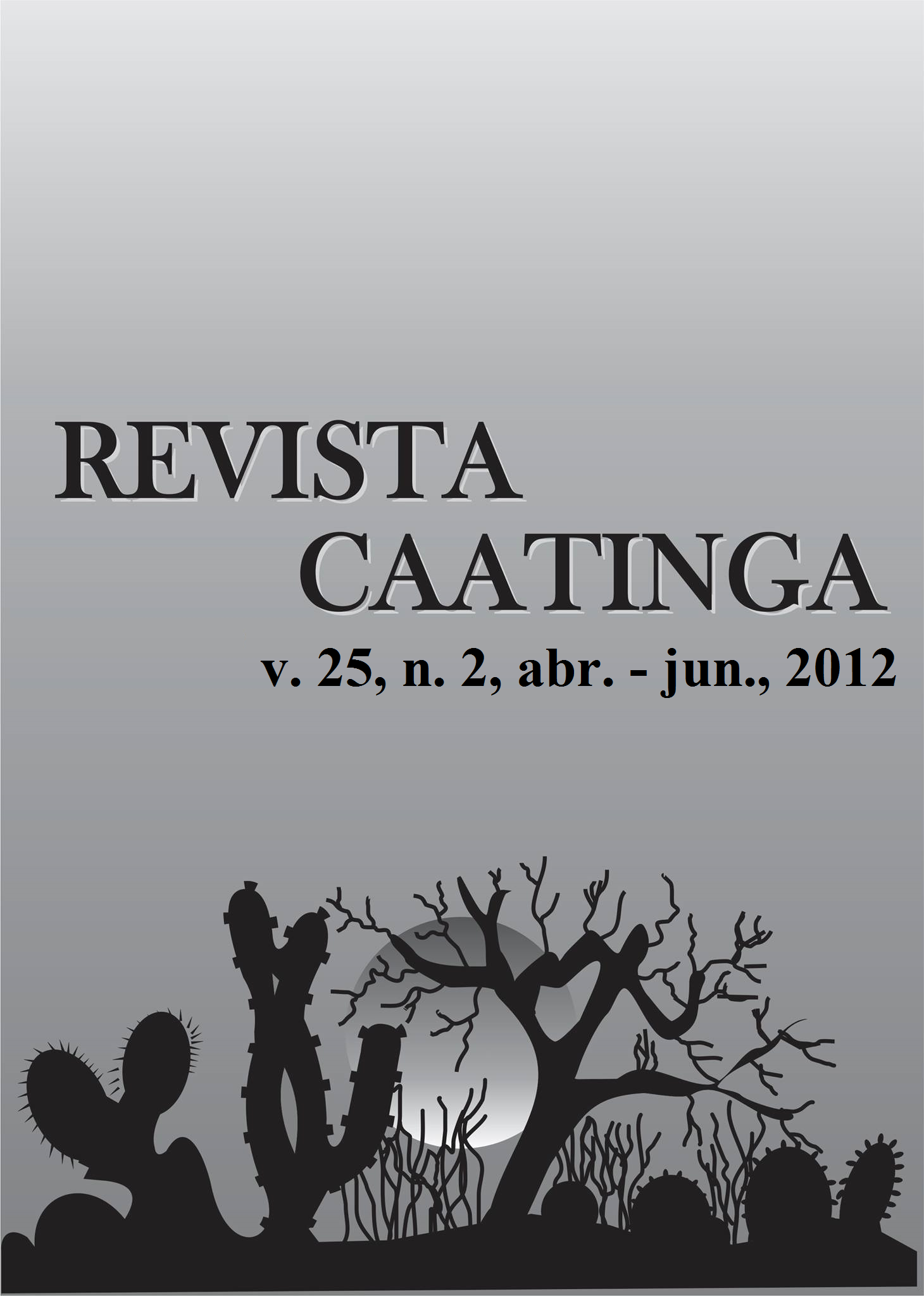SEROLOGICAL DETECTION AND MOLECULAR CHARACTERIZATION OF A BEGOMOVIRUS ISOLATE OBTAINED FROM Macroptilium lathyroides
Palavras-chave:
Weed plant. Geminiviridae. Source of virus. Macroptilium golden mosaic virus. MaGMVResumo
The viruses from the genus Begomovirus, family Geminiviridae are considered emergent pathogens, mainly because of the population explosion of their insect vectors. For this reason, more attention needs to be directed to the correct virus species identification inside the genus. The present paper had the objectives of serologically detecting a begomovirus in Macroptilium lathyroides plants in the State of Ceará, and developing biological, serological and molecular studies with a virus isolate obtained from M. lathyroides. Indirect ELISA with antiserum for Macroptilium golden mosaic virus (MaGMV) demonstrated that the samples collected from M. lathyroides showing golden mosaic in the field were infected with a begomovirus. The virus isolate obtained was transmitted by grafting to eight species of the family Leguminosae, four species of Solonaceae, and one species in the family Amaranthaceae. The virus also was transmitted from M. lathyroides to M. lathyroides by the whitefly Bemisia tabaci biotype B. A DNA fragment of 1.2 kb was obtained by PCR with the primers PAL1v 1978 and PAR1c 496 for component A, and a DNA fragment of 0.5 kb was obtained with the primers PBL1v 2040 and PCR cl for component B, confirming the presence of a begomovirus infecting M. lathyroides. Molecular studies indicated that the begomovirus isolate showed 77% genomic similarity with Bean golden mosaic virus and 75% with Cowpea golden mosaic virus for their cp and rep genes, indicating the possibility that the isolate is a distinct virus species of the Begomovirus genus.Downloads
Downloads
Publicado
Edição
Seção
Licença
Os Autores que publicam na Revista Caatinga concordam com os seguintes termos:
a) Os Autores mantêm os direitos autorais e concedem à revista o direito de primeira publicação, com o trabalho simultaneamente licenciado sob a Licença Creative Commons do tipo atribuição CC-BY, para todo o conteúdo do periódico, exceto onde estiver identificado, que permite o compartilhamento do trabalho com reconhecimento da autoria e publicação inicial nesta revista, sem fins comerciais.
b) Os Autores têm autorização para distribuição não-exclusiva da versão do trabalho publicada nesta revista (ex.: publicar em repositório institucional ou como capítulo de livro), com reconhecimento de autoria e publicação inicial nesta revista.
c) Os Autores têm permissão e são estimulados a publicar e distribuir seu trabalho online (ex.: em repositórios institucionais ou na sua página pessoal) a qualquer ponto antes ou durante o processo editorial, já que isso pode gerar alterações produtivas, bem como aumentar o impacto e a citação do trabalho publicado (Veja O Efeito do Acesso Livre).







